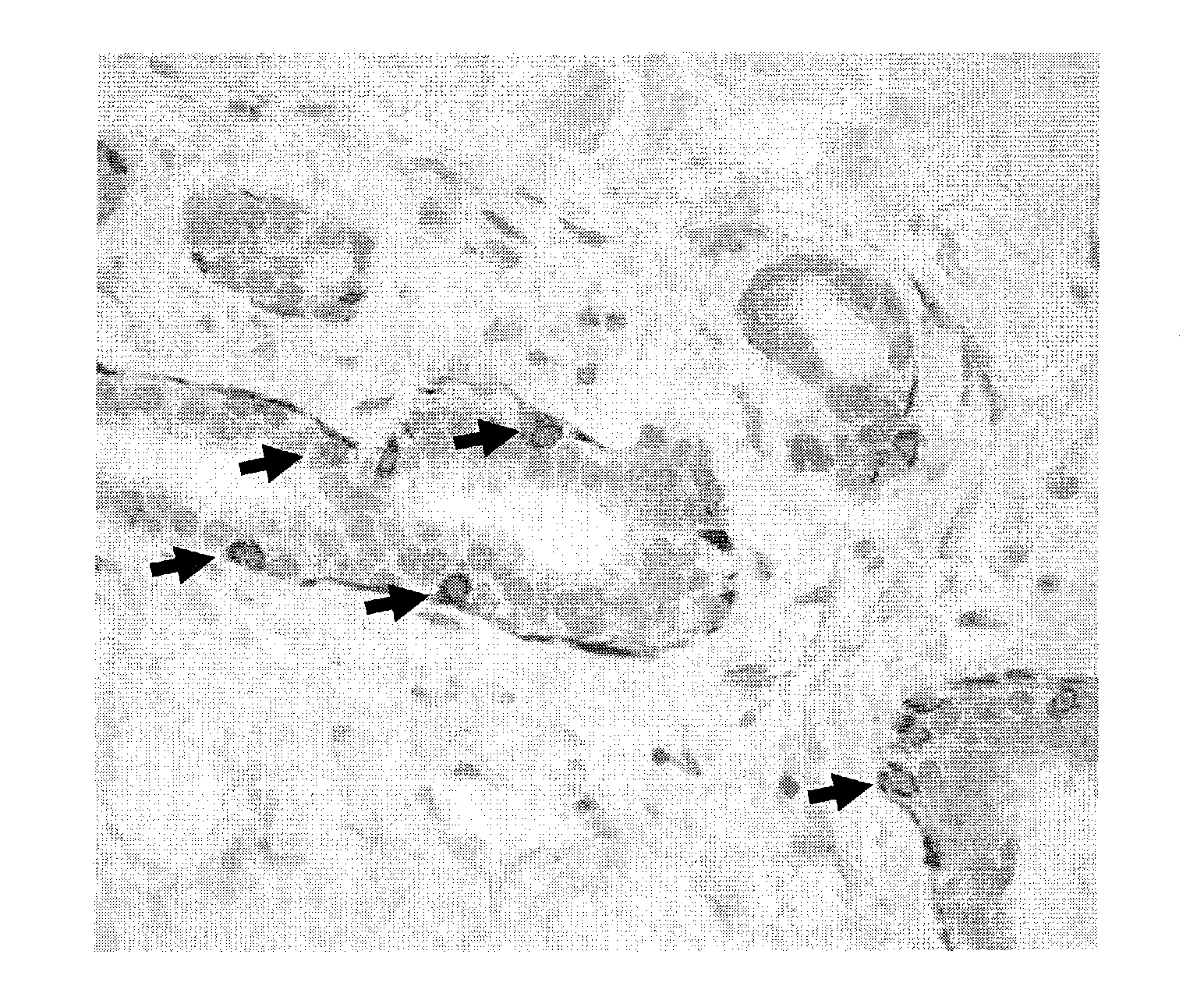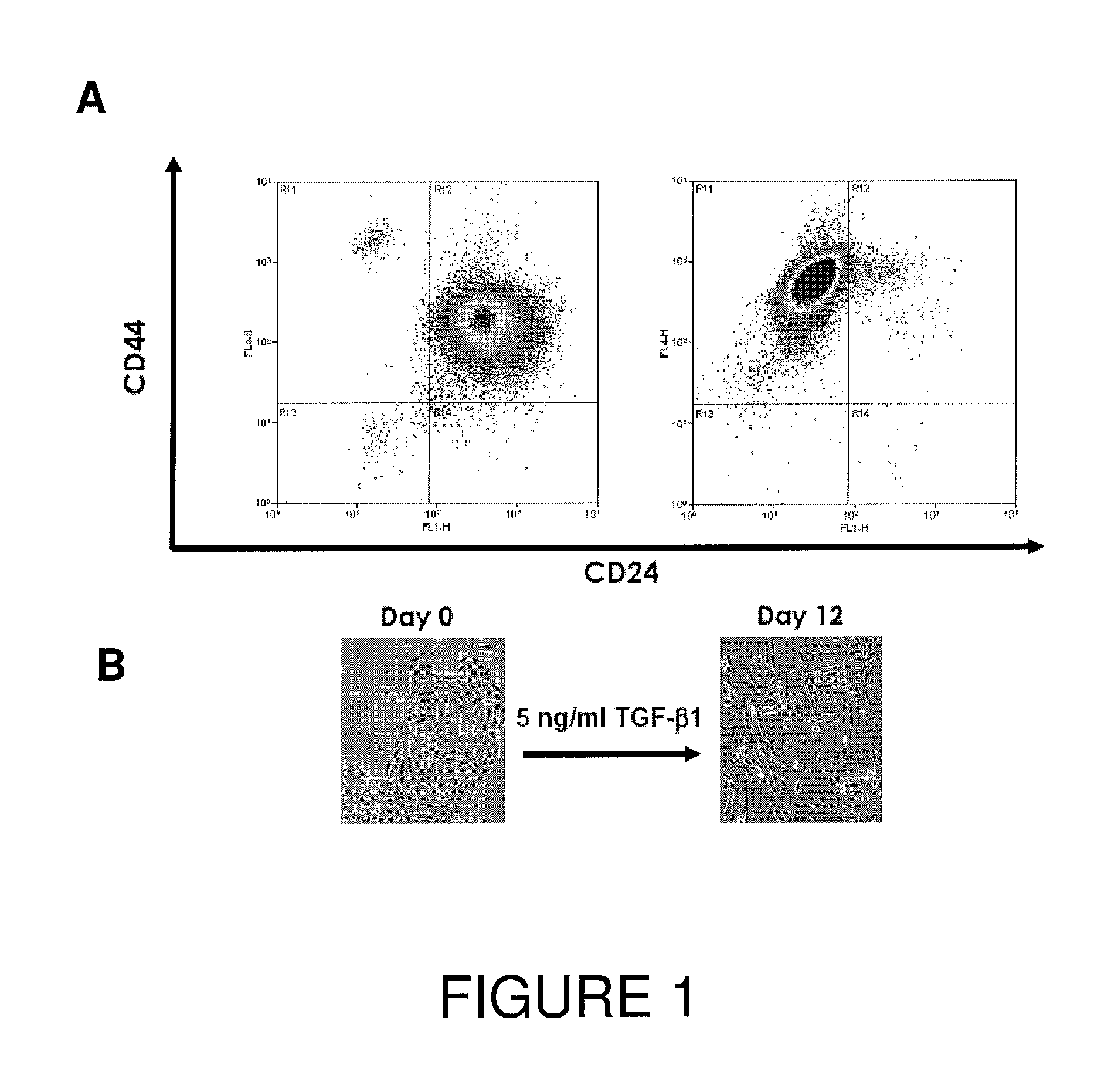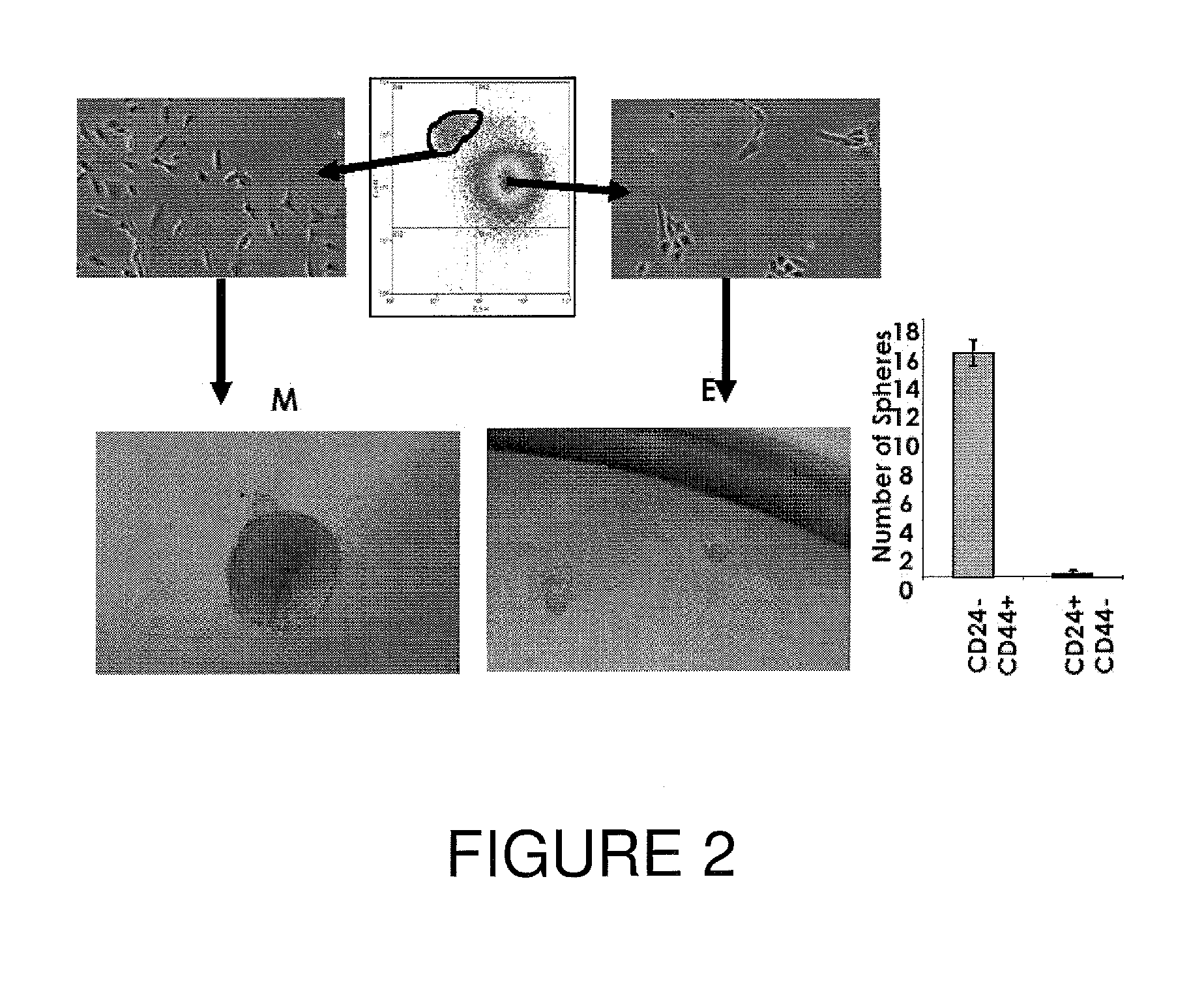Progenitor cells and uses thereof
a technology of progenitor cells and cells, applied in the field of progenitor cells, can solve the problems of far outweighing the available supply of achieve the effect of reducing the need for transplantable tissues and organs
- Summary
- Abstract
- Description
- Claims
- Application Information
AI Technical Summary
Benefits of technology
Problems solved by technology
Method used
Image
Examples
example 1
[0084]Induction of EMT by TGF-β1 Generated CD44high / CD24low Cells
[0085]Mammary epithelial cells obtained from reduction surgery samples were exposed in vitro to 5 ng / ml TGF-β1 for 12 days. During this period, the cells changed growth characteristics from confluent growth to a more scattered, mesenchymal cell appearance (FIG. 1B). Cell sorting showed that this change was associated with increased expression of CD44 while concurrently decreasing expression of CD24, such that the cell population shows a transition from CD44low and CD24high, to CD44high and CD24low (FIG. 1A).
example 2
[0086]CD44high and CD24low Cells Isolated from Human Mammary Epithelial Cells Form Mammospheres
[0087]The separate populations of CD44high and CD24low, and CD44low and CD24high cells were sorted from a human mammalian epithelial cell line and placed in culture to determine whether mammospheres can form therefrom. The mammosphere culture was performed essentially as described by Wicha et al., 2003, Genes & Development 17:1253-70, with slight modifications. For CD44high and CD24low and CD44low and CD24high human mammary luminal epithelial cells, single cells were plated in ultra-low attachment plates (Corning) at a density of 5000-10,000 cells / mL. Cells were grown in mammary epithelial growth medium (MEGM) from Cambrex (without BPE) supplemented with B27 (Invitrogen), 20 ng / mL EGF and 20 ng / mL bFGF, 4 μg / mL heparin, and 1% methylcellulose. The cells were grown for about 10 days, and the medium changed about every three days. As shown in FIG. 2, left panel, only the CD44high and CD24low...
example 3
[0088]Only Mesenchymal Cells can give Rise to Mesenchymal Cells and Epithelial Cells
[0089]Human mammary epithelial cells from a cell line were sorted into CD44high and CD24low cells, and CD44low and CD24high cells, and the expression of these markers was followed over time in culture. As shown in FIG. 3, the CD44high and CD24low (M) cells generated CD44low and CD24high (E) cells and CD44high and CD24low (M) cells over time; however, the CD44low and CD24high (E) cells remained CD44lowand CD24high (E) expressing and no CD44high and CD24low (M) cells appeared. Thus, only cells with the phenotype CD44high and CD24low (M) were capable of generating both CD44high and CD24low (M) cells as well as another cell type, CD44low and CD24high (E), identifying the CD44high and CD24low (M) cells as progenitor cells.
PUM
| Property | Measurement | Unit |
|---|---|---|
| period of time | aaaaa | aaaaa |
| pharmaceutical composition | aaaaa | aaaaa |
| time | aaaaa | aaaaa |
Abstract
Description
Claims
Application Information
 Login to View More
Login to View More - R&D
- Intellectual Property
- Life Sciences
- Materials
- Tech Scout
- Unparalleled Data Quality
- Higher Quality Content
- 60% Fewer Hallucinations
Browse by: Latest US Patents, China's latest patents, Technical Efficacy Thesaurus, Application Domain, Technology Topic, Popular Technical Reports.
© 2025 PatSnap. All rights reserved.Legal|Privacy policy|Modern Slavery Act Transparency Statement|Sitemap|About US| Contact US: help@patsnap.com



